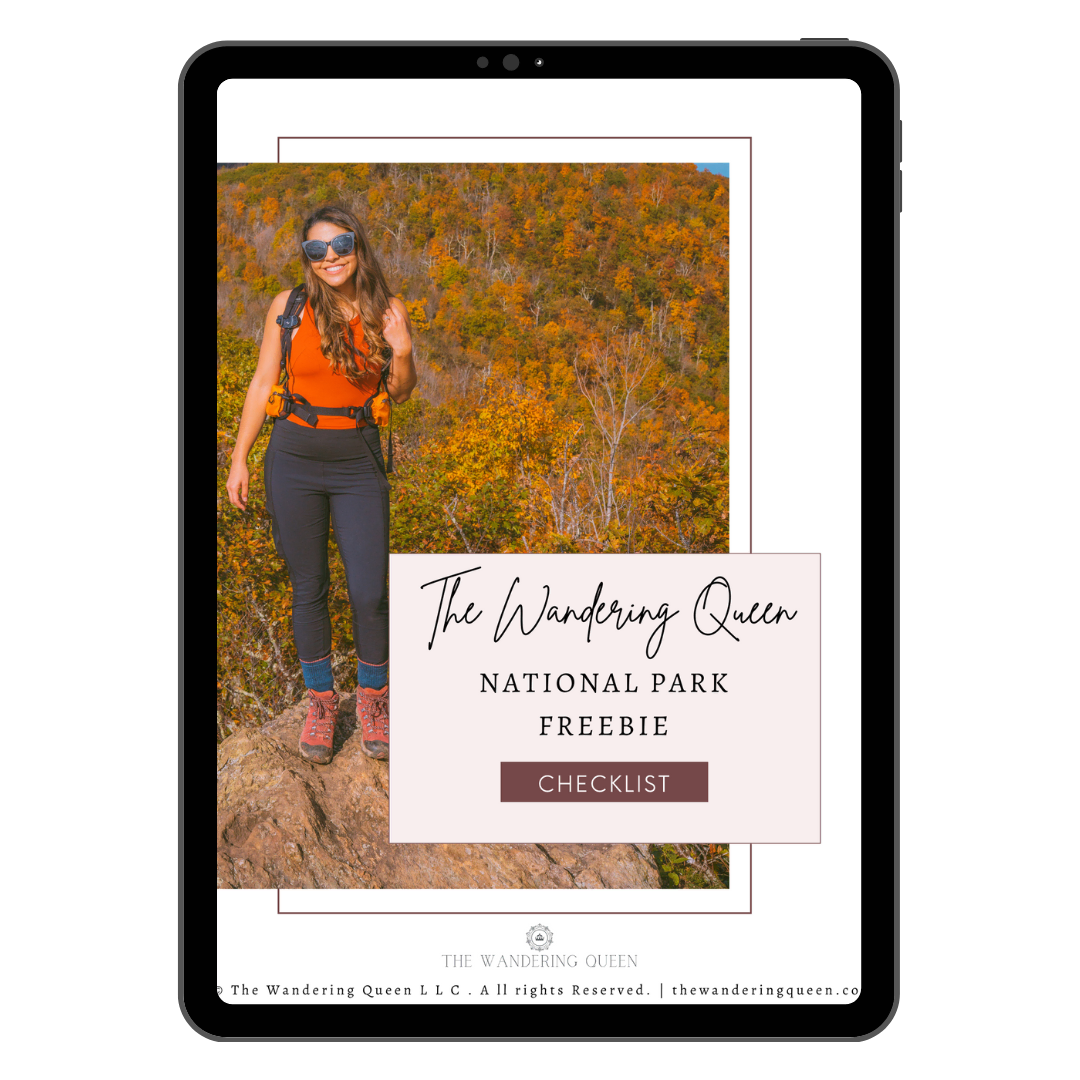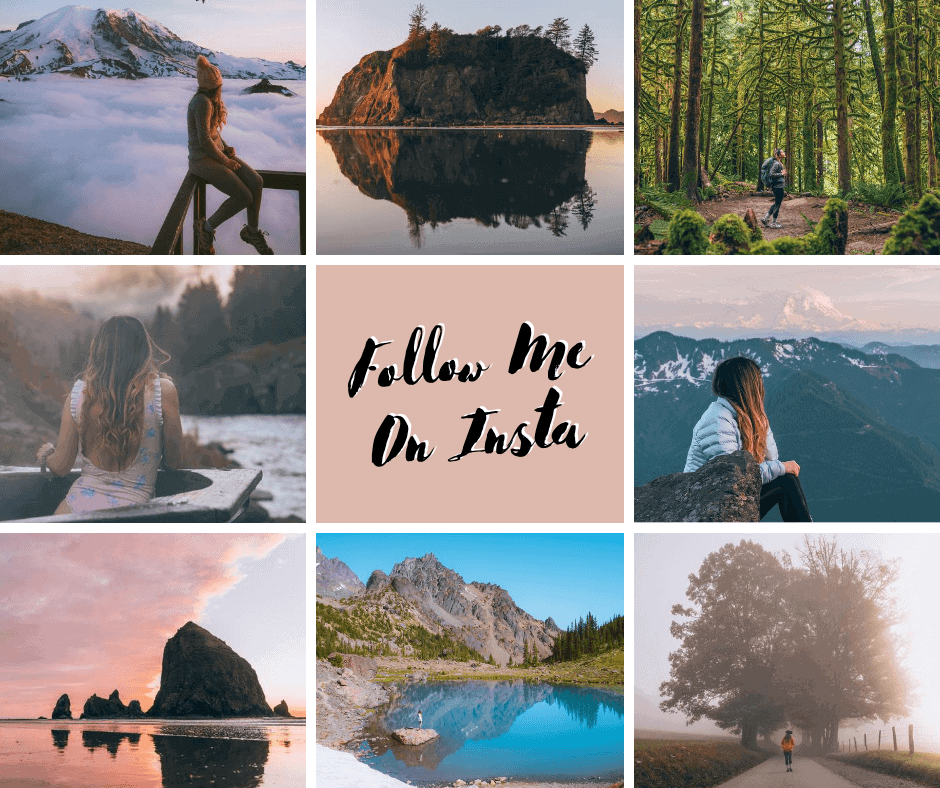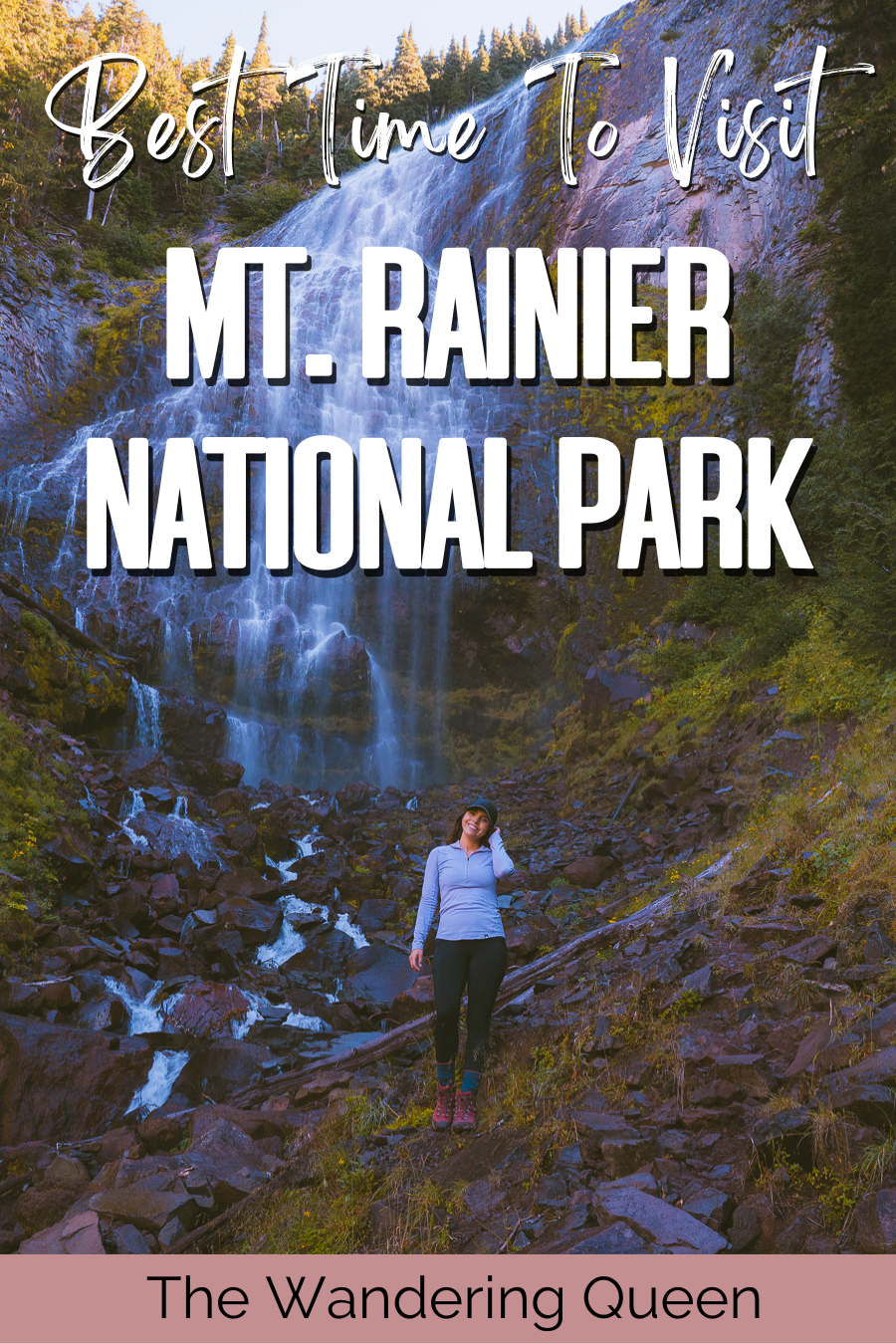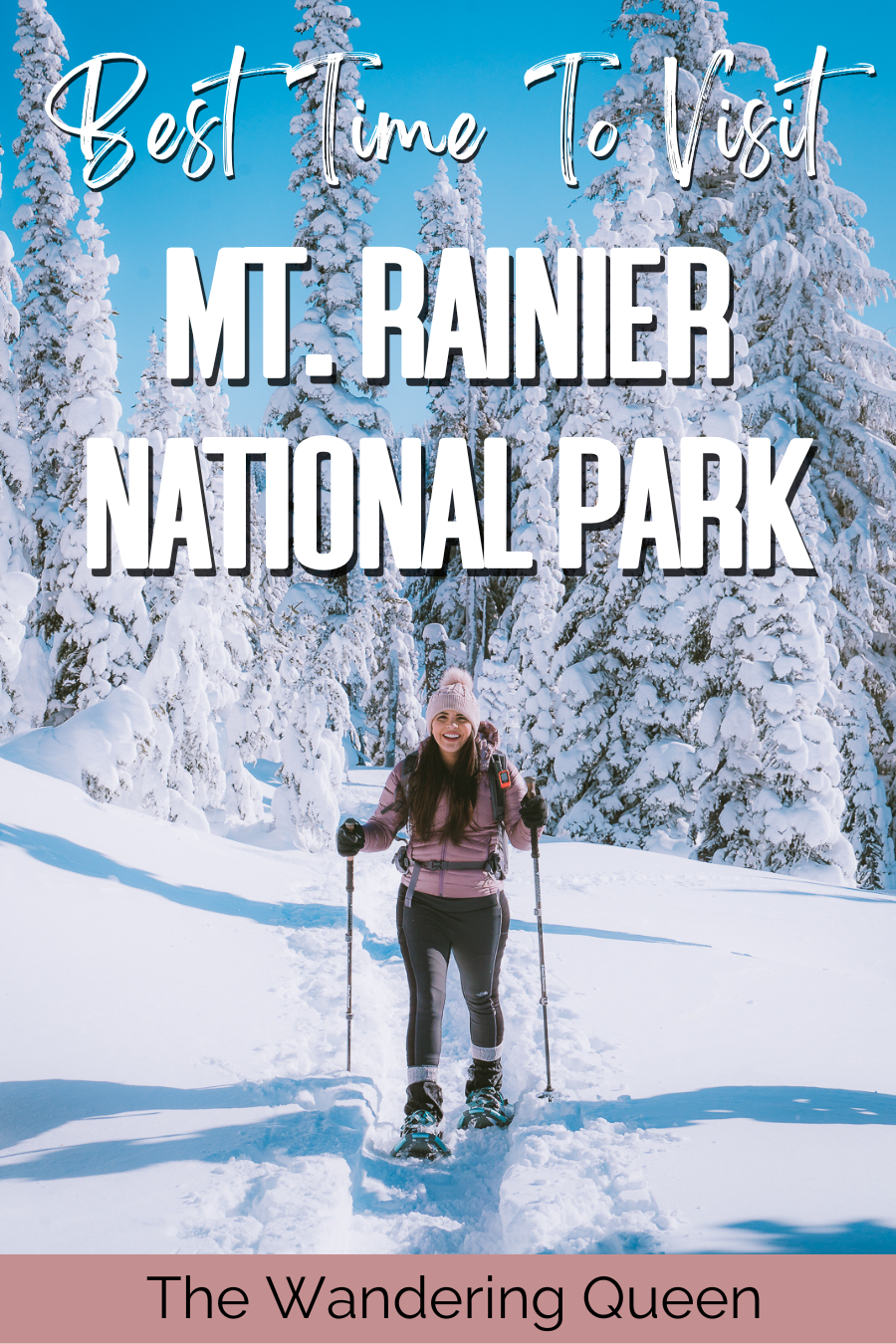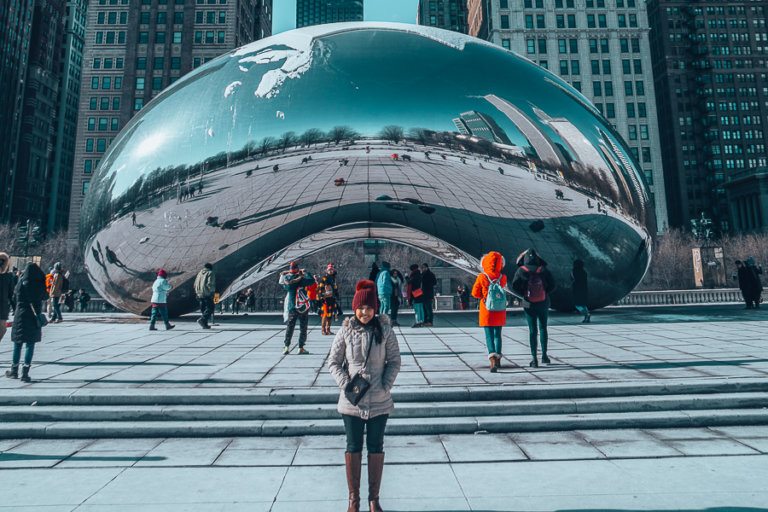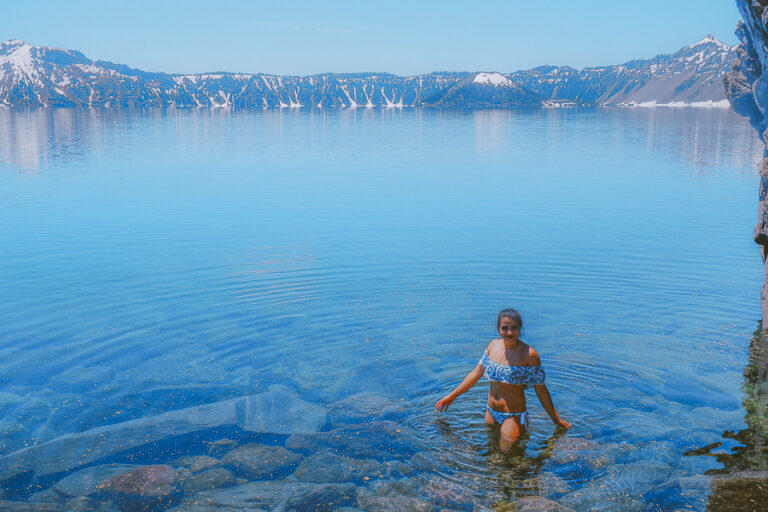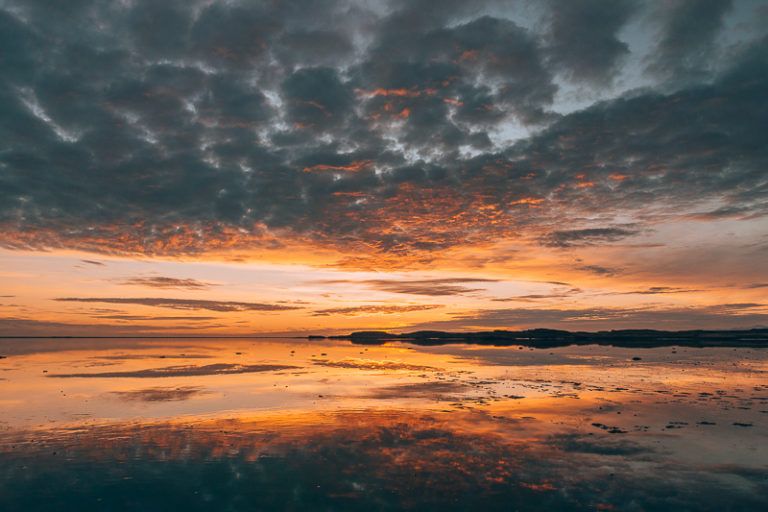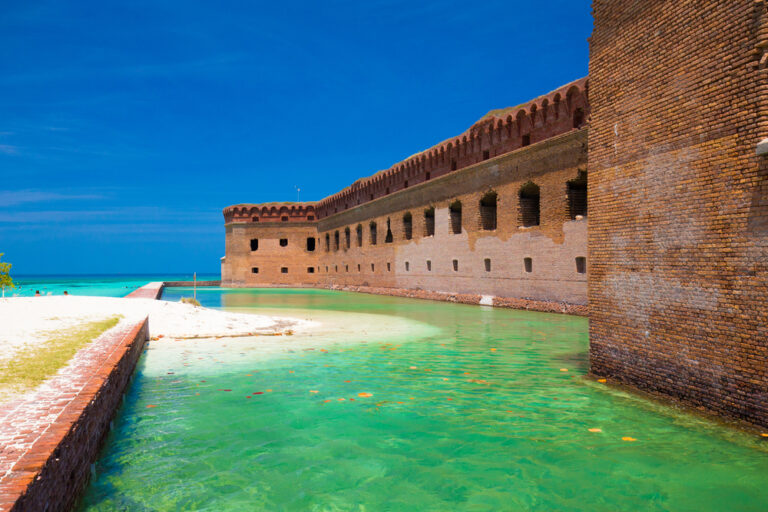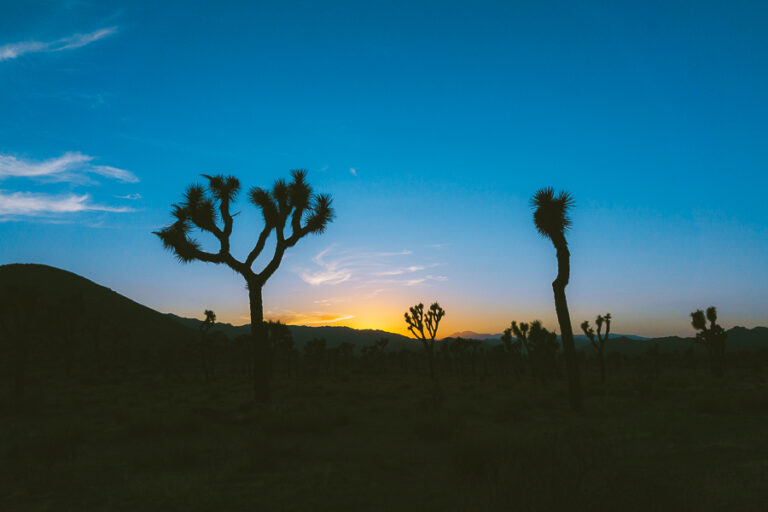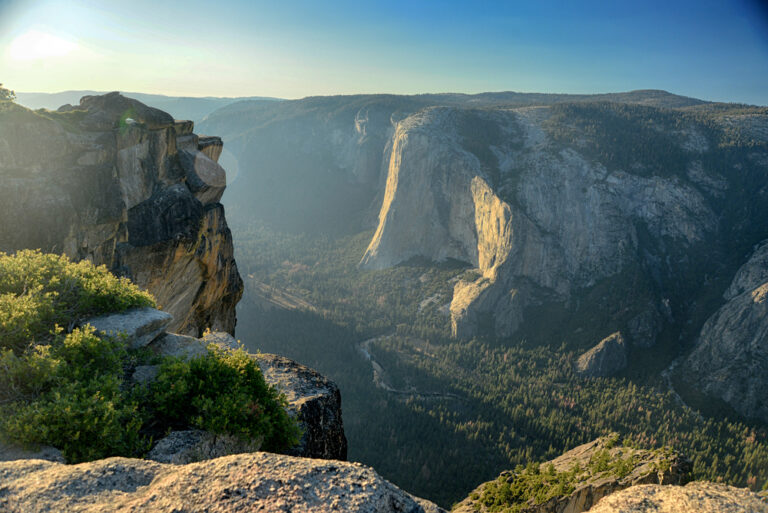Best Time to Visit Mt Rainier: Weather + Fun Activities
So you want to experience the mighty Tahoma — a place full of wonder and ample opportunity to embrace the great outdoors like never before. Think hikes, mountain biking, snowshoeing, and a slew of other challenging adventures.
That said, when is the best time to visit Mt Rainier?
Fear not. This comprehensive guide will cover every season in depth, plus the average temperatures and some fun things to do in Mount Rainier National Park. If that sounds like something you need to consider for your Mount Rainier itinerary, then keep reading.
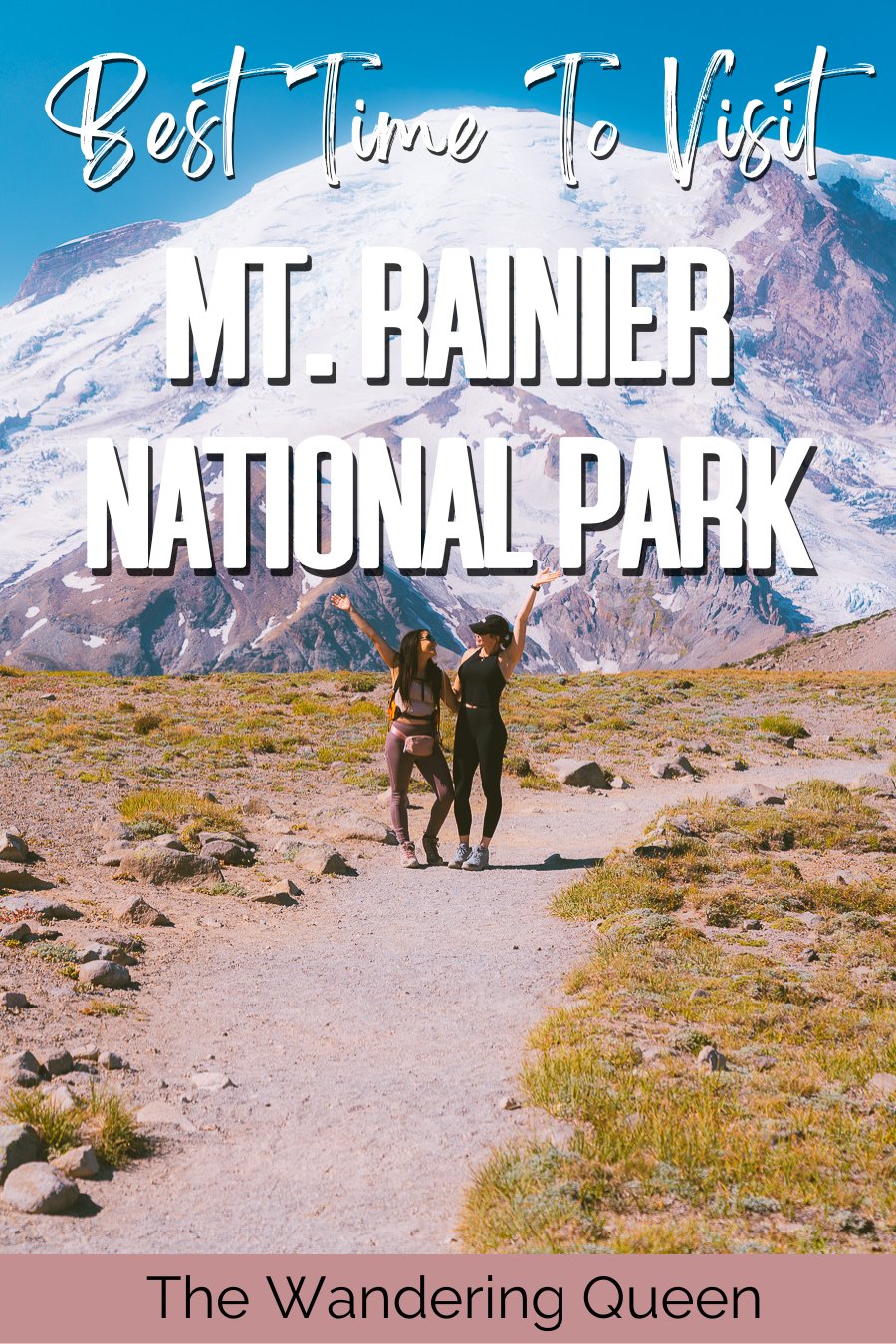
Disclosure: This post contains affiliate links. If you click one of them, I may receive a small commission (for which I am very grateful for) at no extra cost to you.
Mount Rainier National Park
Related Posts
How to Get to Mount Rainier National Park
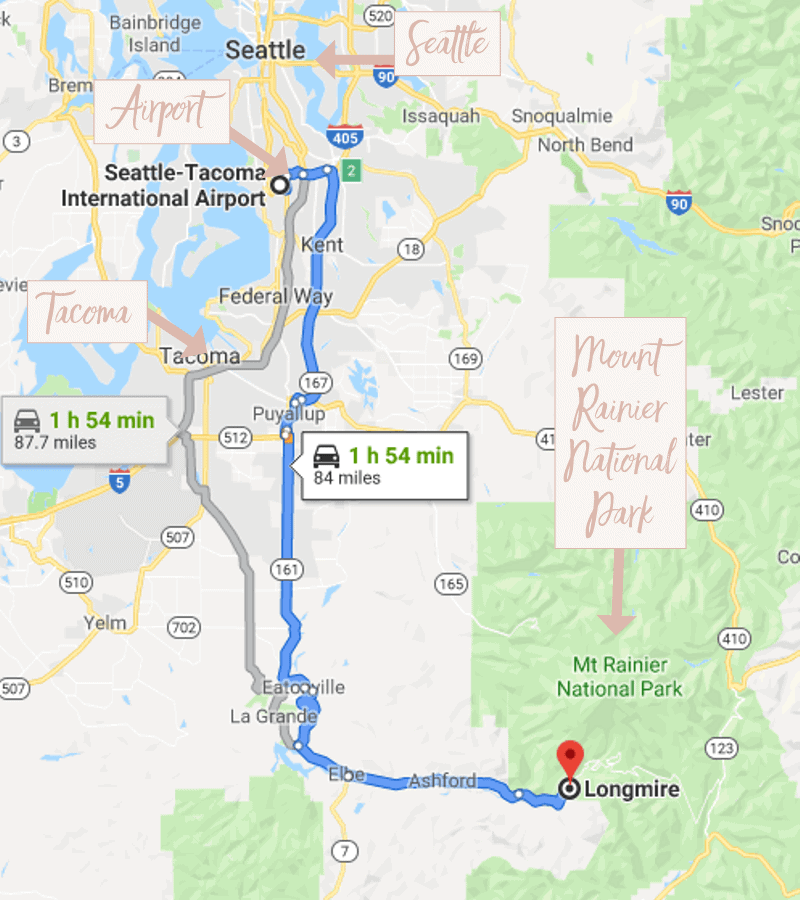
You’ll likely travel to Mount Rainier National Park from either Olympia, Tacoma, or Seattle.
- Olympia to Mount Rainier: Drive along the WA-7 S/Mountain Highway E for an hour and a half or 64.4 miles to reach the park.
- Seattle to Mount Rainier: The WA-7 S/Mountain Hwy E route will see you reach your destination in about two hours.
- Tacoma to Mount Rainier: Get on WA-7 S road and drive to the park for over an hour.
The route to Mount Rainier National Park may vary depending on which visitor center you choose. The three main ones are Sunrise, Henry M. Jackson, and Ohanapecosh Visitor Center.

Note: The closest international airport to Mount Rainier National Park is the Seattle-Tacoma International Airport (SEA). It’s just an hour-and-40-minute drive (77 miles) from the airport.
Best Time to Visit Mount Rainier National Park
So, what’s the best time to take a road trip to Mount Rainier? Most travelers agree that July through August is the ultimate time to visit this park. This is when you’ll see breathtaking blooming wildflowers as the area’s lush subalpine meadows transform into a lustrous spectacle. The dry, warm weather also presents ample opportunity to take up various hiking trails.
That said, it’s not such a straightforward answer for everyone. Mt Rainier’s best time to visit differs from one person to another since we all have distinct preferences and expectations.
For this reason, deep-diving into every season by looking at the average temperatures, weather conditions, and what to do in these circumstances can help you decide.
Read next: Fun Day Trip to Mount Rainier from Seattle
Worst Time to Visit Mount Rainier National Park
Is there a bad time to visit Mount Rainier? Yes, there is, and this happens to be during early spring, particularly April, and in late fall, which is November. Visiting Rainier around these times means you’ll be exposed to cold and wet conditions, often preventing you from exploring the park to its fullest.
During spring, daytime temperatures can be as high as 40-50°F (4.4 – 10°C) while dropping below the freezing point almost every night. Simultaneously, it will rain an awful lot in April, with an average of eight inches of rain. Believe it or not, this is still manageable compared to the non-stop rainfall in November that sees up to 20 inches on average.
All the best views in the state
100+ WA Hikes
Embark on Washington’s best trails with our eBook! Inside, find top hikes, expert tips, and stunning views, making every adventure unforgettable. Dive into the beauty of Washington’s outdoors now!
Visiting Mt Rainier in Spring
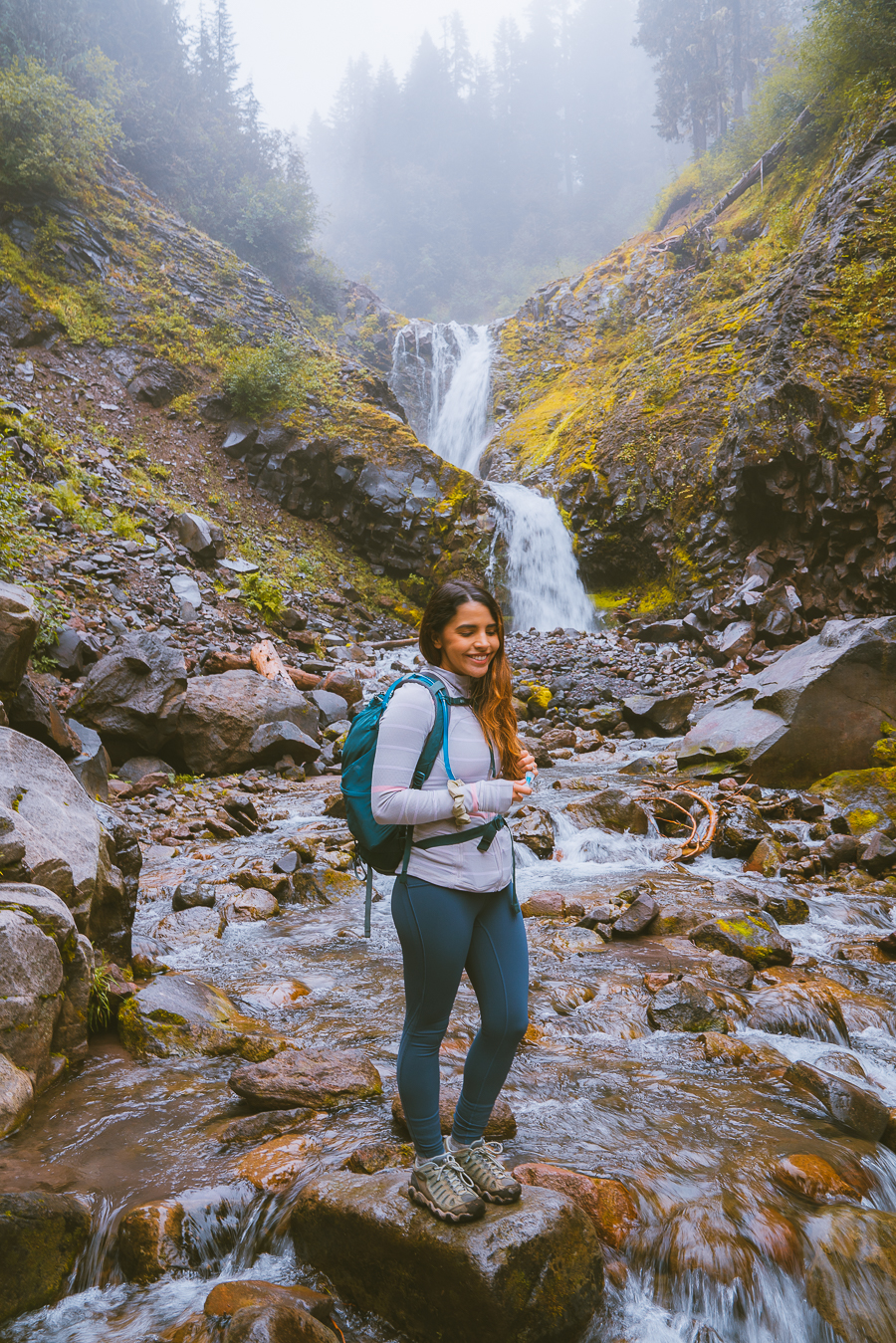
Spring brings with it fresh air and more daylight hours with the ability to roam the park freely. While it’s considered the worst time to visit for many – for some, this may be the best time yet. If you can stand the wet and cold conditions while beating the crowds, then it will be an enjoyable time for you.
By this season (April to May), the snow starts melting, but there will be some spots left here and there for sledding. The waterfalls start filling up, gushing with water, allowing you to chase them on your Mount Rainier day hikes.
As mentioned, you can expect rainy weather with warm days and freezing nights. It will be a good idea to pack a pair of waterproof hiking boots, a rain jacket, and anything else that’ll keep you dry just in case it starts to pour. Wearing thick, warm sweaters and insulated jackets after sunset protects you from freezing temperatures.
Things to Do in Mount Rainier in Spring
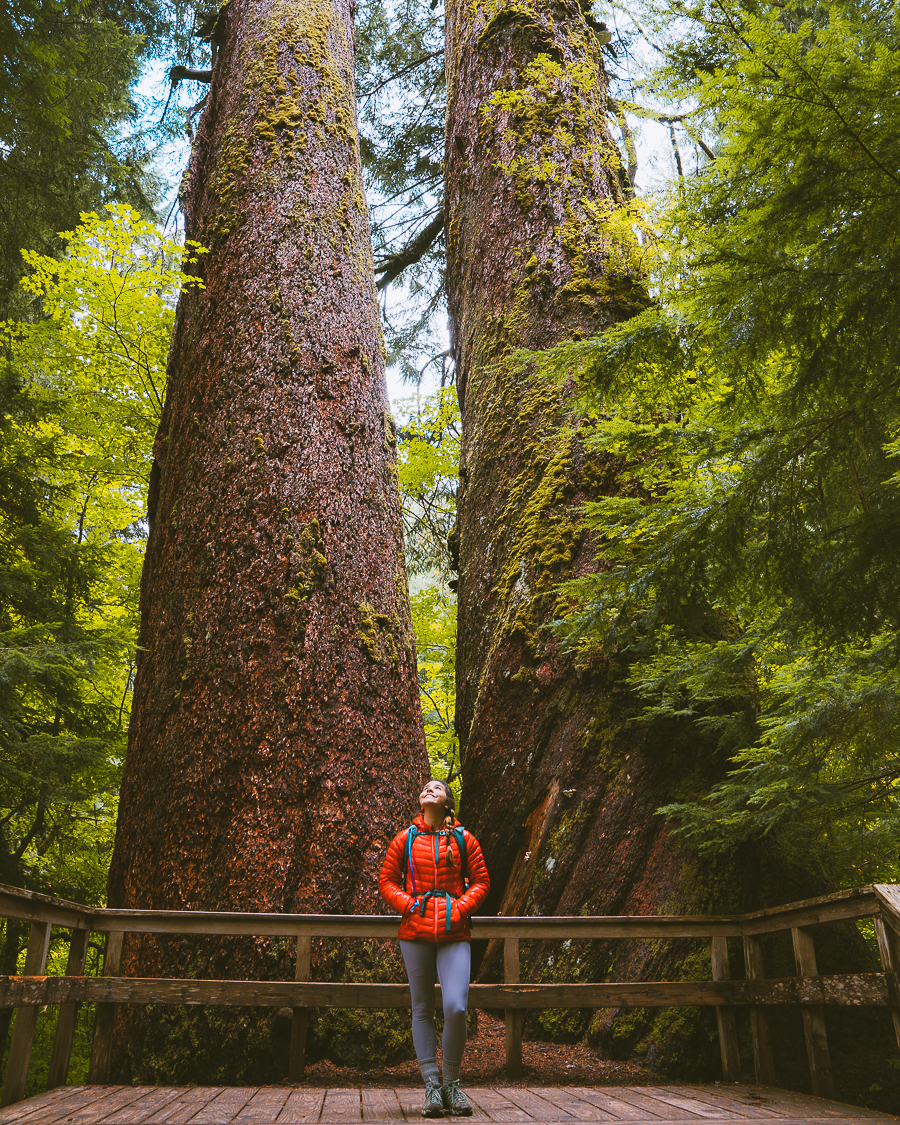
Here are some of the best things to do in Mount Rainier during spring.
Admire Waterfalls
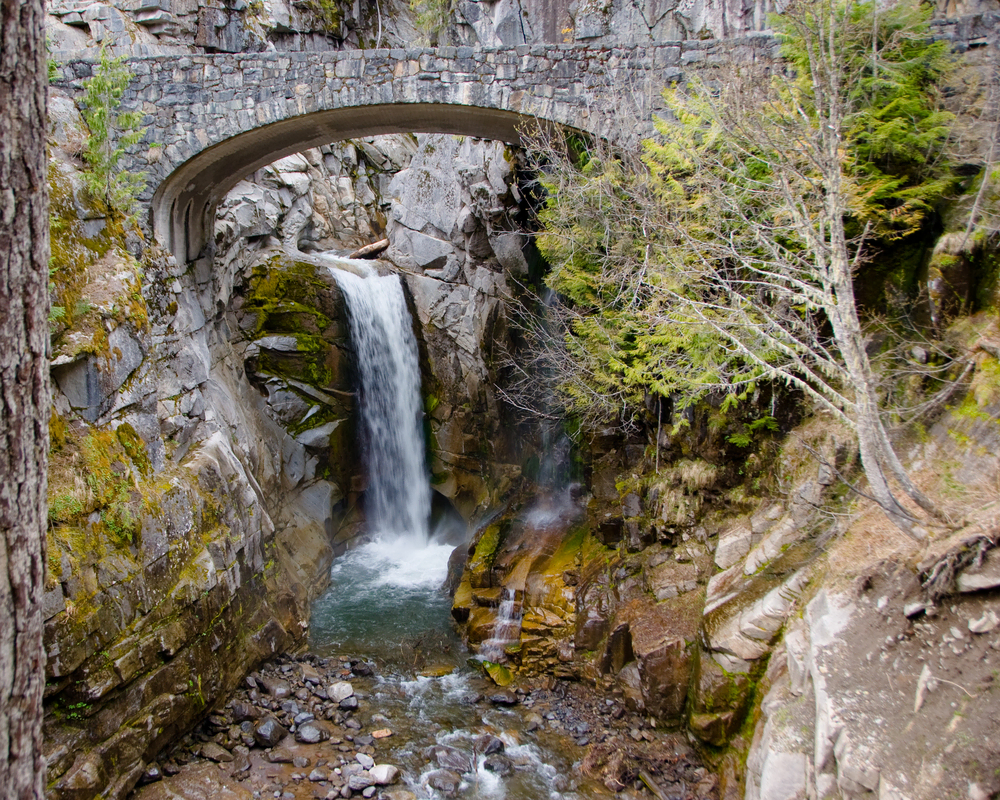
You simply cannot visit Mount Rainier in the spring without admiring her roaring waterfalls. These spectacular sights are a gift from the snowmelt brought by warmer day temperatures. You can drive to Paradise for beautiful views of Christine Falls and the thundering Narada Falls from their respective parking spots.
Alternatively, you can go on a day hike to Comet Falls along the Paradise River Trail to see the Carter and Madcap Falls. Then, there’s also Myrtle Falls, one of the most photographed sights in the park on the Edith Creek Trail. All of these falls are near Paradise and accessible via many trails or a car.
Hop on a Steam Train
Gain an unforgettable perspective of the Mount Rainier foothills by riding a vintage train. You’ll enjoy an 18-mile journey along the countryside with mountain vistas and wonderful sights. The Mount Rainier Railroad is the longest continuously operating steam train railroad in the Pacific Northwest.
Spot Wildlife at Northwest Trek
Animals become alive in spring after waking from their winter slumber. This means it’s the perfect occasion to acquaint yourself with the captivating Northwest wildlife.
The Northwest Trek is a scenic location filled with meadows, forests, and lakes — making it a hub for frequent wildlife encounters. More than 200 North American animals are in this area, including bison, otters, minks, black bears, and weasels.
Visiting Mt Rainier in Summer
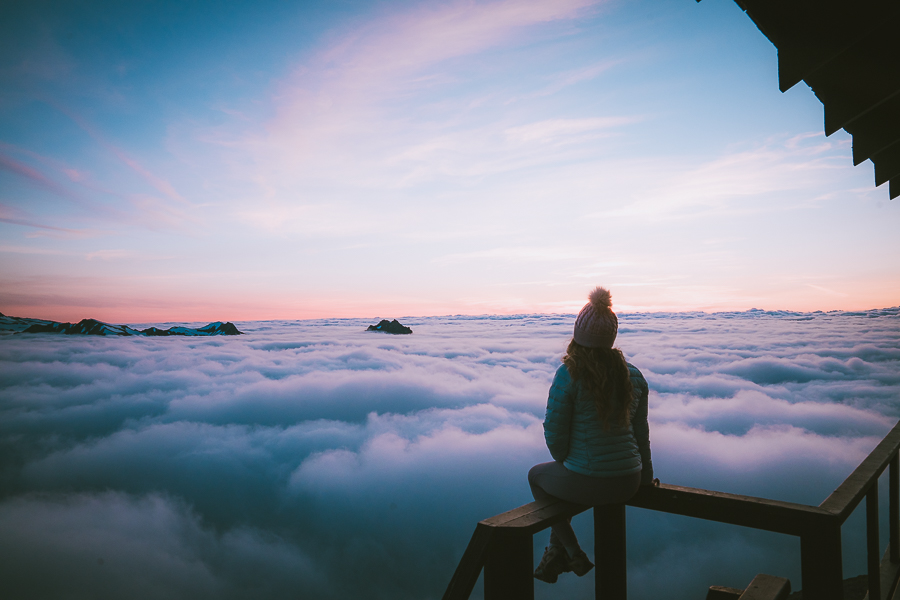
Summer is the most popular time for people to visit Mount Rainier. All the roads and entrances are open 24 hours a day, the animals are grazing about, and the flora is thriving. Occurring between July and August, the weather will be dry and warm.
Temperatures range from a high of 73°F (23°C) to a low of 48°F (9°C). So, it’s essential to wear layers since it can quickly go from warm to cool and foggy. The sunrises or sunsets and the blooming wildflowers are top attractions at this time.
It’s also a fantastic time to take up a hiking trail – if you’ve planned ahead to avoid the bustling crowds. Yes, the summer congestion is no joke, with limited parking areas and over an hour’s waiting time at the Nisqually and White River entrances.

Pro Tip: Enter the park before 10:00 am or after 2:30 pm to help with delays during peak visitation.
Things to Do in Mount Rainier in Summer
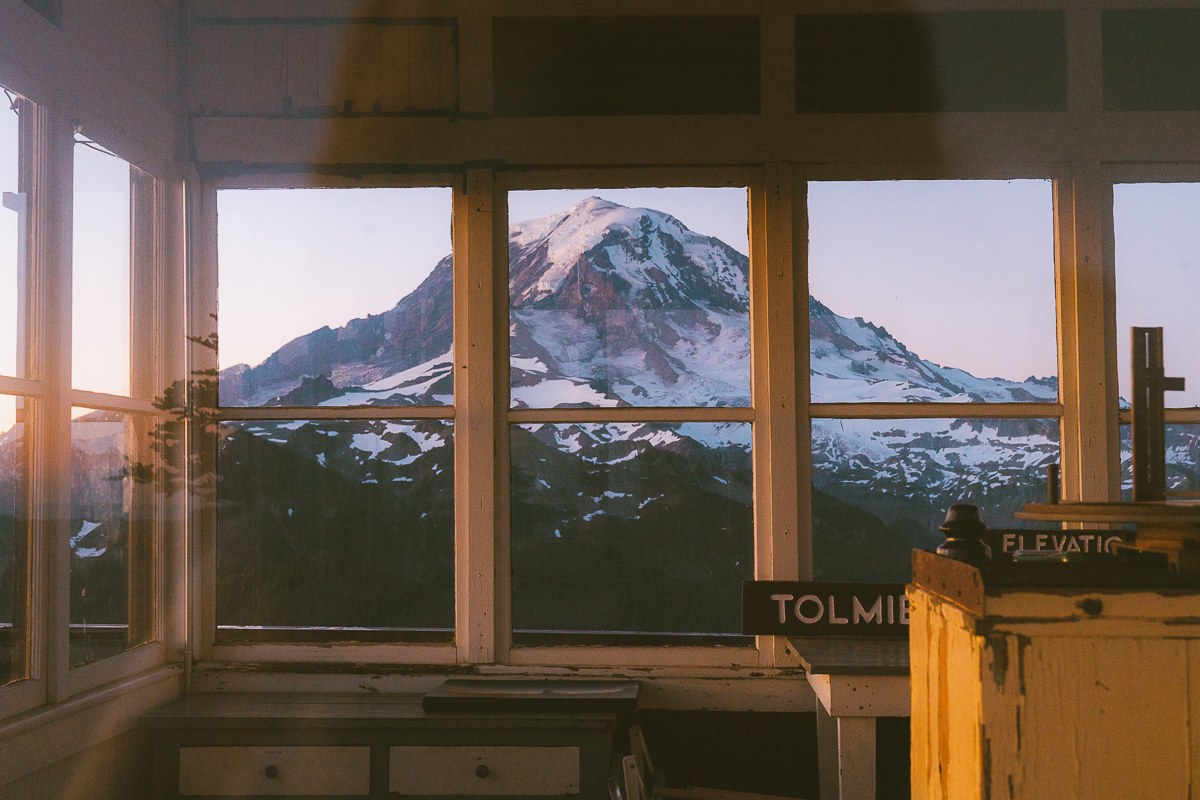
Below are the top summer activities in Mount Rainier.
Go Camping/Glamping
Mt Rainier National Park boasts 39 campgrounds, with Cougar Rock and Ohanapecosh being the most popular. Don’t wait too long to make your reservation, as these sites fill up quickly. Expect to pay $20 per night for a standard individual site during the peak season and upwards of $60 for group sites.
Grab Your Free Car Camping Checklist! 🚗🌲
Ready to elevate your car camping game? Snag our essential checklist to ensure you’ve got everything you need for a stress-free, fun-filled adventure! Perfect for beginners and seasoned campers alike. Download now and hit the road prepared! 🌟🎒
Enjoy Hot Air Balloon Riding
Take on new heights and gaze upon Mount Rainier like never before with a heart-pulsing hot air balloon ride. Seattle Ballooning allows you to soar through the sky with family or friends past the majestic mountains for a once-in-a-lifetime experience.
Discover Lookout Towers & Wildflower Viewing
The vibrant wildflower meadows in Mount Rainier National Park are a sight to behold. You can discover these colorful displays via well-maintained trails. Paradise and Sunrise are the best areas for wildflower viewing.
There are also spectacular lookout trails, such as the Skyline Loop Trail that takes you to Myrtle Falls Viewpoint and Panorama Point for stunning vistas.
Visiting Mt Rainier in Fall
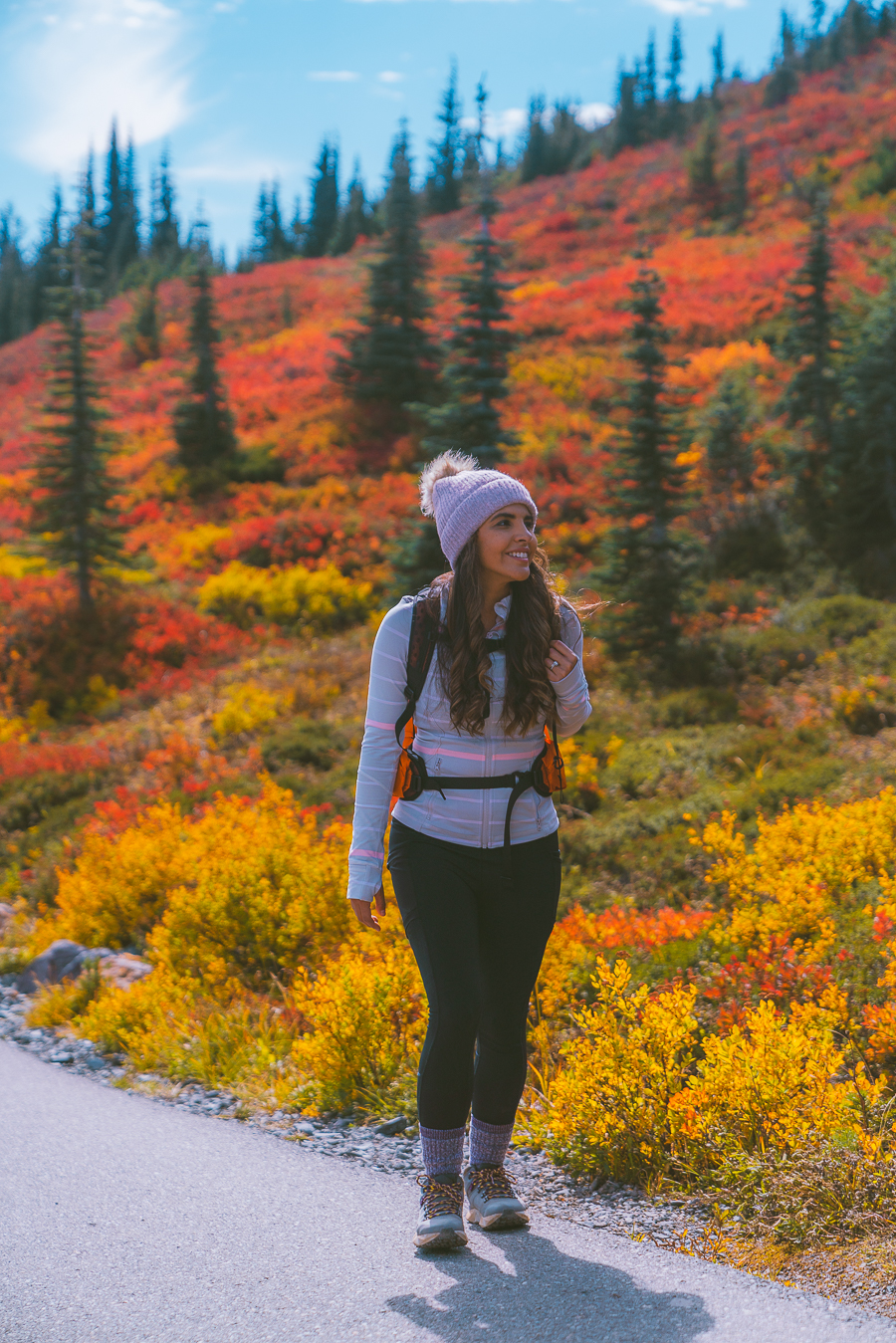
September through October is when the fall season kicks in and brings a new color palette of reds, oranges, and yellows. This is when the park is not overly crowded, and the temperatures are cold, drizzly, and humid, with average highs of 54°F (12°C) and lows of 36°F (2°C).
Be prepared for occasional warm weather and sudden rainfall. The rainy season typically starts mid to late October and continues until early summer.
Things to Do in Mount Rainier in Fall
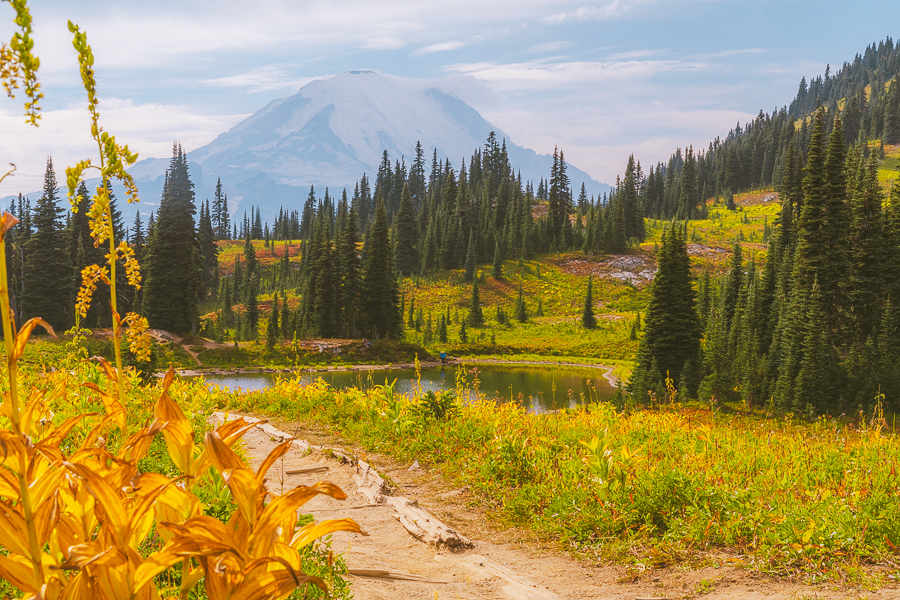
Here are some of the best things to do in fall.
Capture Fall Foliage
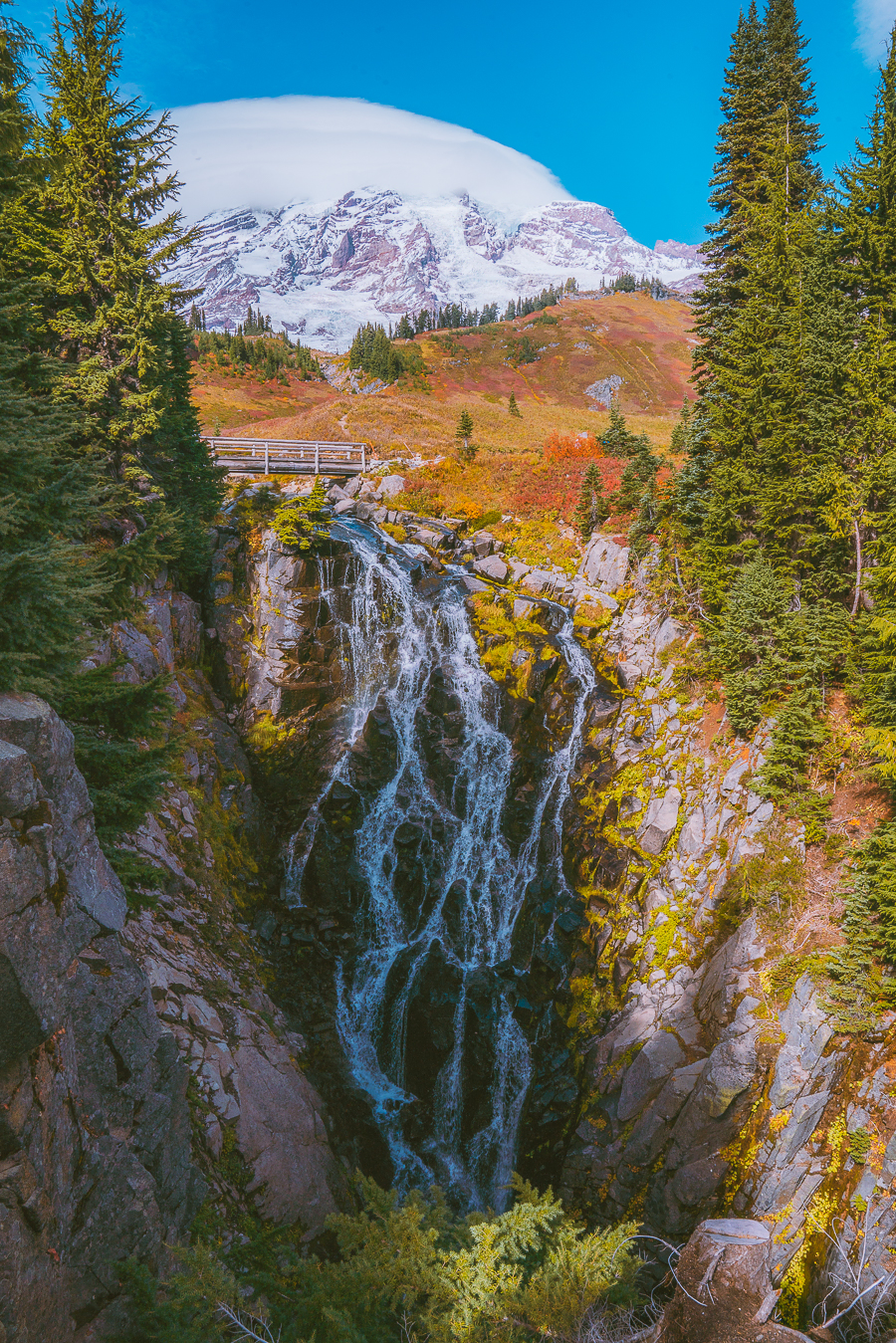
The open spaces in this season allow you to park anywhere and access places without a fuss so you can focus on your photography. This is when the fall colors will be on full display.
Besides that, this is also a fantastic time to capture the most stunning shots of the Milky Way, and Mount Rainier will still be blanketed in snow and glaciers.

Top Tip: Snap the best pics possible with these hiking photography tips.
Download my free Outdoor Photography Guide
Go Mountain Biking
This is one of the most apparent activities any adrenaline junkie can’t pass up on. Enjoy the scenic West Side Road, a famous mountain biking route with an elevation gain of approximately 1,120 feet.
Go Huckleberry Hunting
Interestingly, non-commercial berry picking is allowed in the park. Visitors can pick two quarts per person per day of huckleberries, blackberries, thimbleberries, and salmonberries.
Drive Along the Chinook Scenic Byway
This prime driving route is as scenic as they come, with a diverse landscape of the Central Cascades. Stretching from Mt. Baker-Snoqualmie National Forest to Mount Rainier National Park, you’ll have no shortage of picturesque views.
Hike to the Highest Lookout
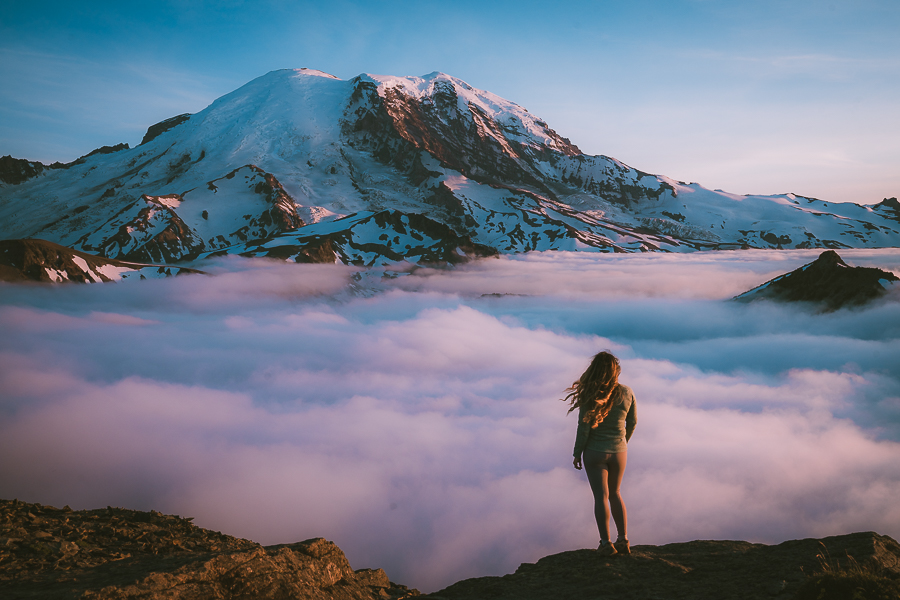
Perched on rocky Mount Fremont, standing at 7,181 feet, this impressive lookout is the highest in the park, affording you the most breathtaking panoramic vistas. The Mount Fremont Lookout is a historic structure built in 1934 as a two-story frame cabin for watchmen who stood guard over the forest.
Reach it via the Sourdough Ridge Trail for a moderately challenging route that ends in unmissable views.
Visiting Mt Rainier in Winter
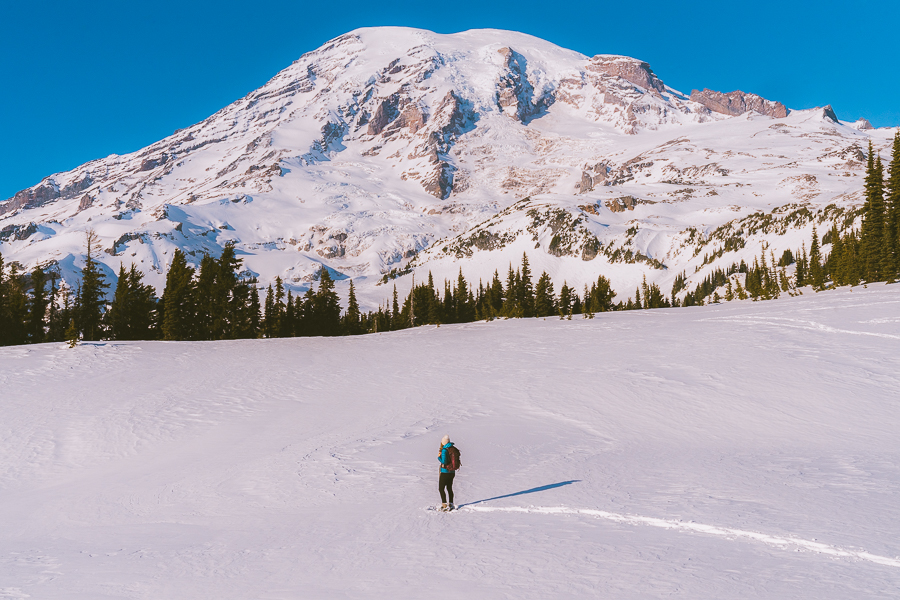
Pack your snowshoes and insulated coats as Mount Rainier transforms into a winter wonderland covered in thick snow and glistening glaciers. This season lasts from November through May. While the park is open year-round, many areas, roads, and some entrances may close in winter due to extreme conditions.
However, if you keep an eye on the latest weather updates, you can visit when the conditions are still acceptable enough to access most parts. Mt Rainier is a bona fide snow haven as it receives record-breaking snowfall yearly, with Paradise being the snowiest place on earth. The average annual snowfall is roughly 670 inches.
Expect very cold, snowy, and windy conditions. The average temperatures will likely range between highs of 33°F (0°C) and lows of 23°F (-5°C).

Hot Tip: If all the roads are closed under extreme conditions, you can go to the nearby Crystal Mountain Resort, the state’s largest ski area with gorgeous vistas of Mount Rainier.
Things to Do in Mount Rainier in Winter
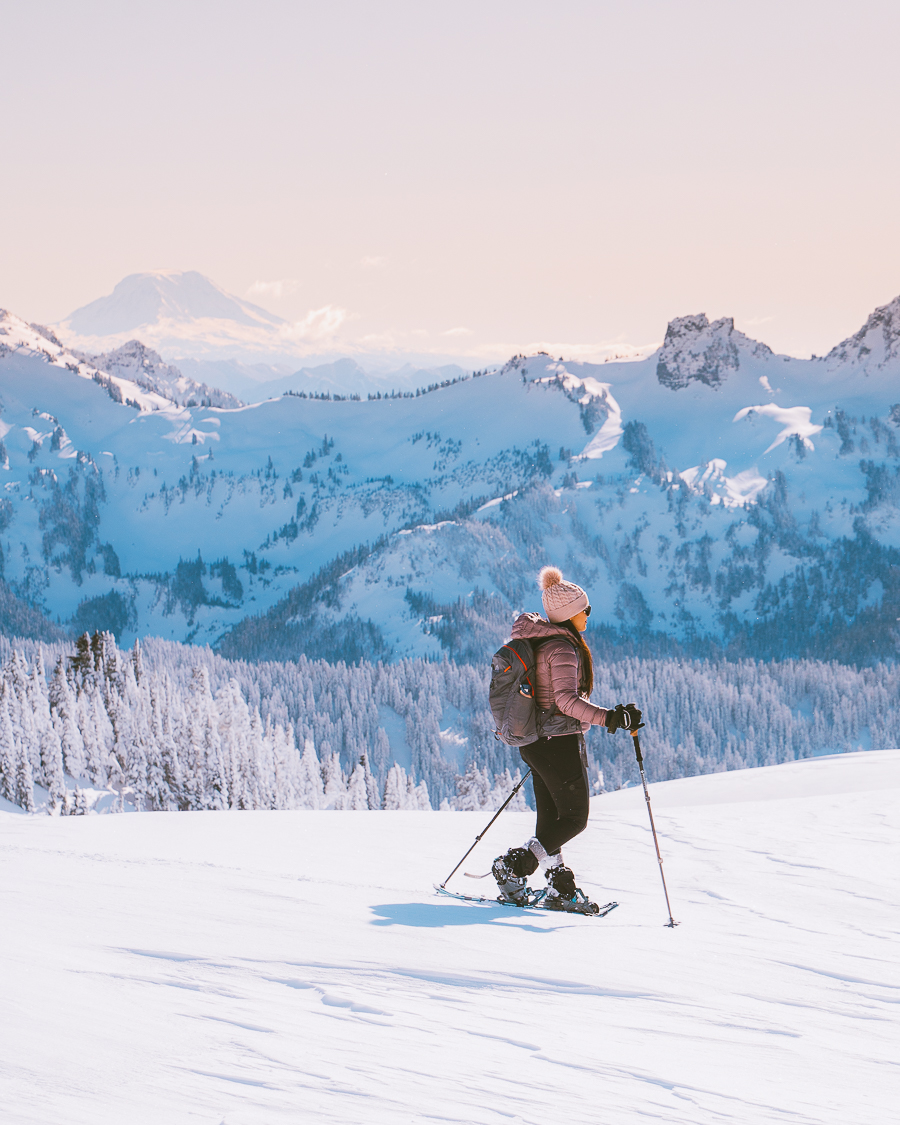
Here are the most exciting winter things to do in Mt Rainier.
Indulge in Winter Sports
These include snowshoeing, snowboarding, sledding, and skiing. Winter is your opportunity to take advantage of outdoor snow activities. You can join a ranger-led snowshoe tour in the Paradise area. These tours operate on a first-come-first-serve basis (so arrive early!), and snowshoes will be provided.
Alternatively, go to Crystal Mountain for some of the best skiing and snowboarding anywhere.
Next Read: Guide to Snowshoeing Mt Rainier National Park
Go Snowmobiling
Dare to do something more exciting? Try snowmobiling on West Side Road down to the Round Pass (the only section available for this activity). Whizz down the vast white landscape much like a rollercoaster while catching a glimpse of wildlife and snow-laden forests.
Perfect Your Photography
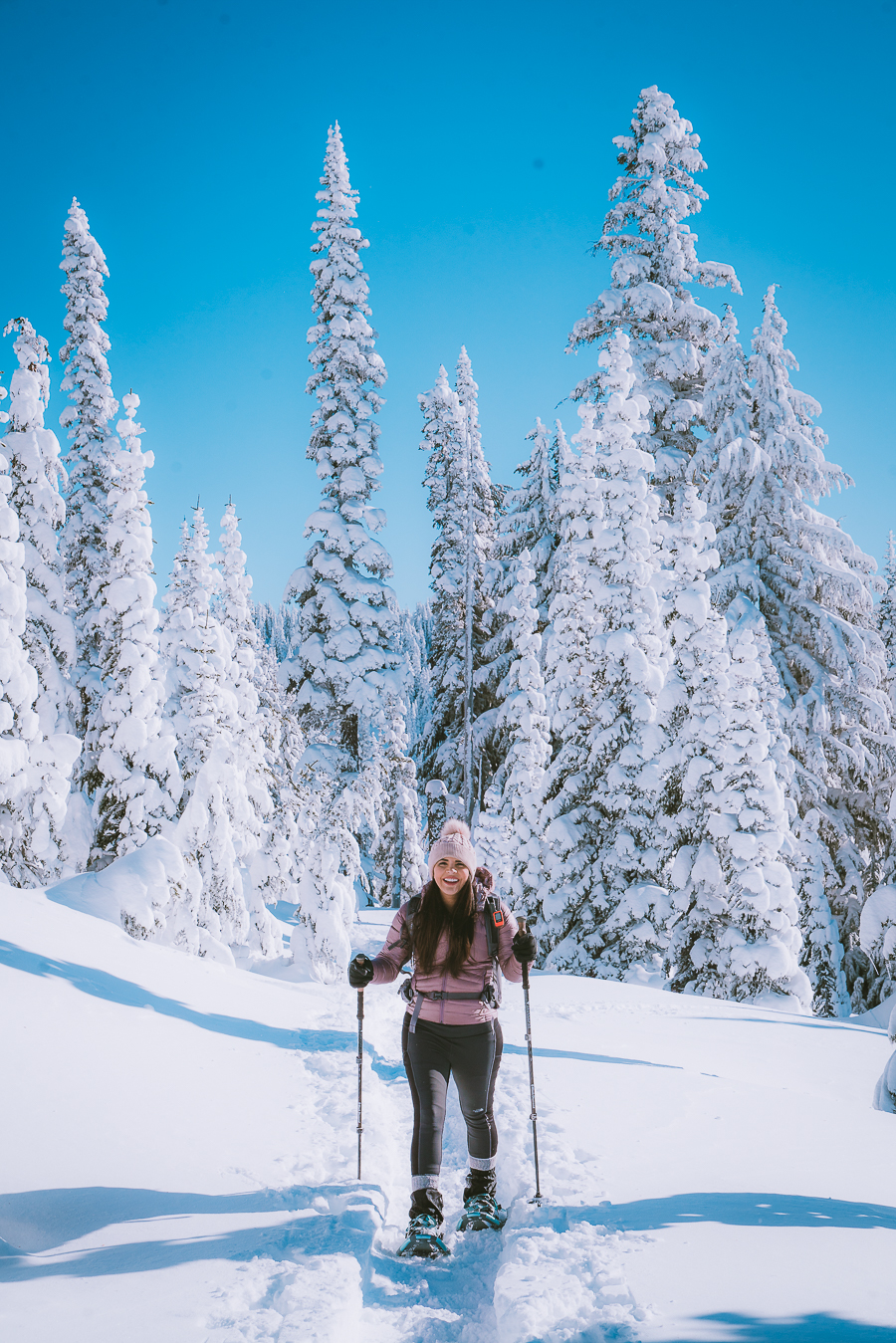
Imagine stepping into a real-life holiday card surrounded by frost-kissed trees, crystalized lakes, and snow everywhere. If you’re not much of an adrenaline junkie, then sightseeing and photography might be for you. Capture the serenity and all the winter hues, whites, blues, grays, and pops of evergreens.
Download my Washington Hiking Checklist!
FAQs for Your Mt Rainier Itinerary
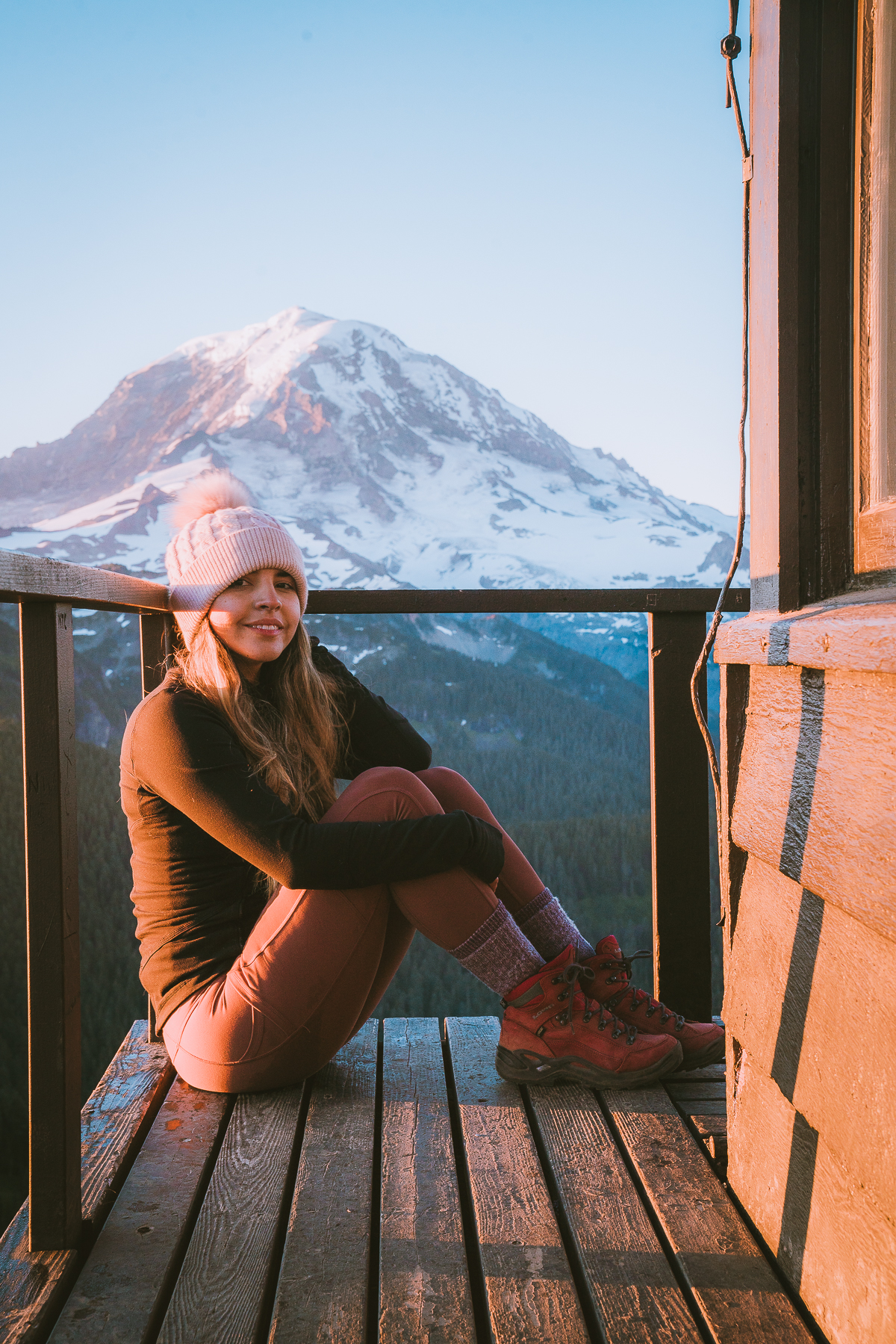
Still have some lingering questions about the best time to go to Mount Rainier? Check out the answers to these commonly asked queries.
What’s the Best Time to Hike Mt Rainier?
As mentioned, July through August, which falls in the summer, is best for hiking trails.
How Many Days Is Enough for Visiting Mount Rainier?
Spend at least three days in Mount Rainier National Park to get the most out of your trip. Doing so allows you to spend one day in Sunrise, another in Paradise, and an extra day to either explore the Carbon River area or more hiking trails.
Where Is the Best Place to Enter Mount Rainier National Park?
Your best bet is to enter through the Nisqually entrance, as it’s open year-round. It also offers easy access to the Reflection Lakes, Narada Falls, Longmire, and Paradise.
Summing Up the Best Time to Visit Mt Rainier National Park
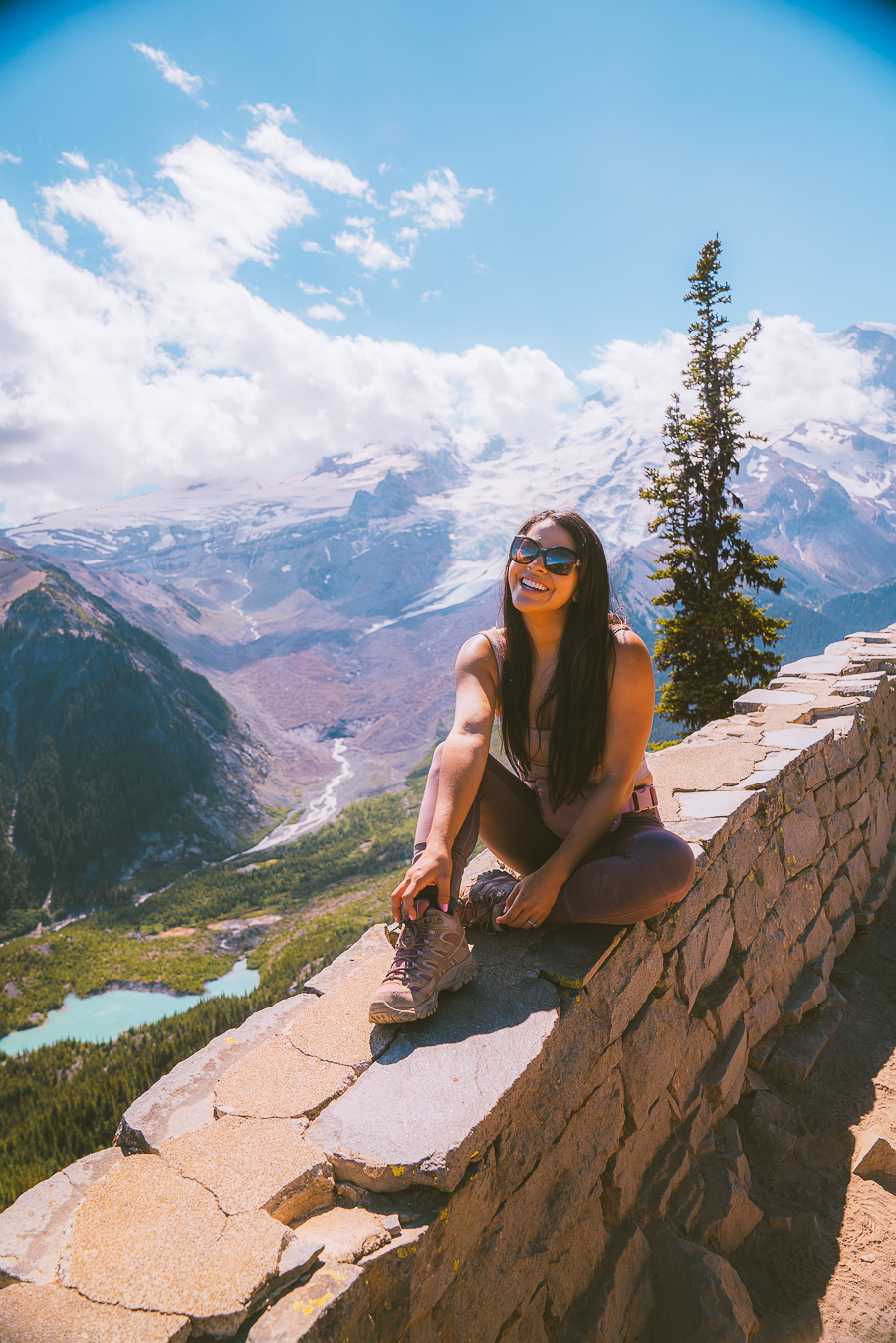
Now that you have a complete overview of the best time to visit, when will you find yourself amid the imposing snow-capped Mt Rainier range? As with any destination, the time of year you choose will depend on your needs and objectives.
Are you into camping and sightseeing? Visit in summer. Prefer skiing and snowshoeing? Then go in winter. Regardless of the time, you’re guaranteed a magical medley of nature, adventure, and geology.
Read next: Where to stay in Mt Rainier National Park.

